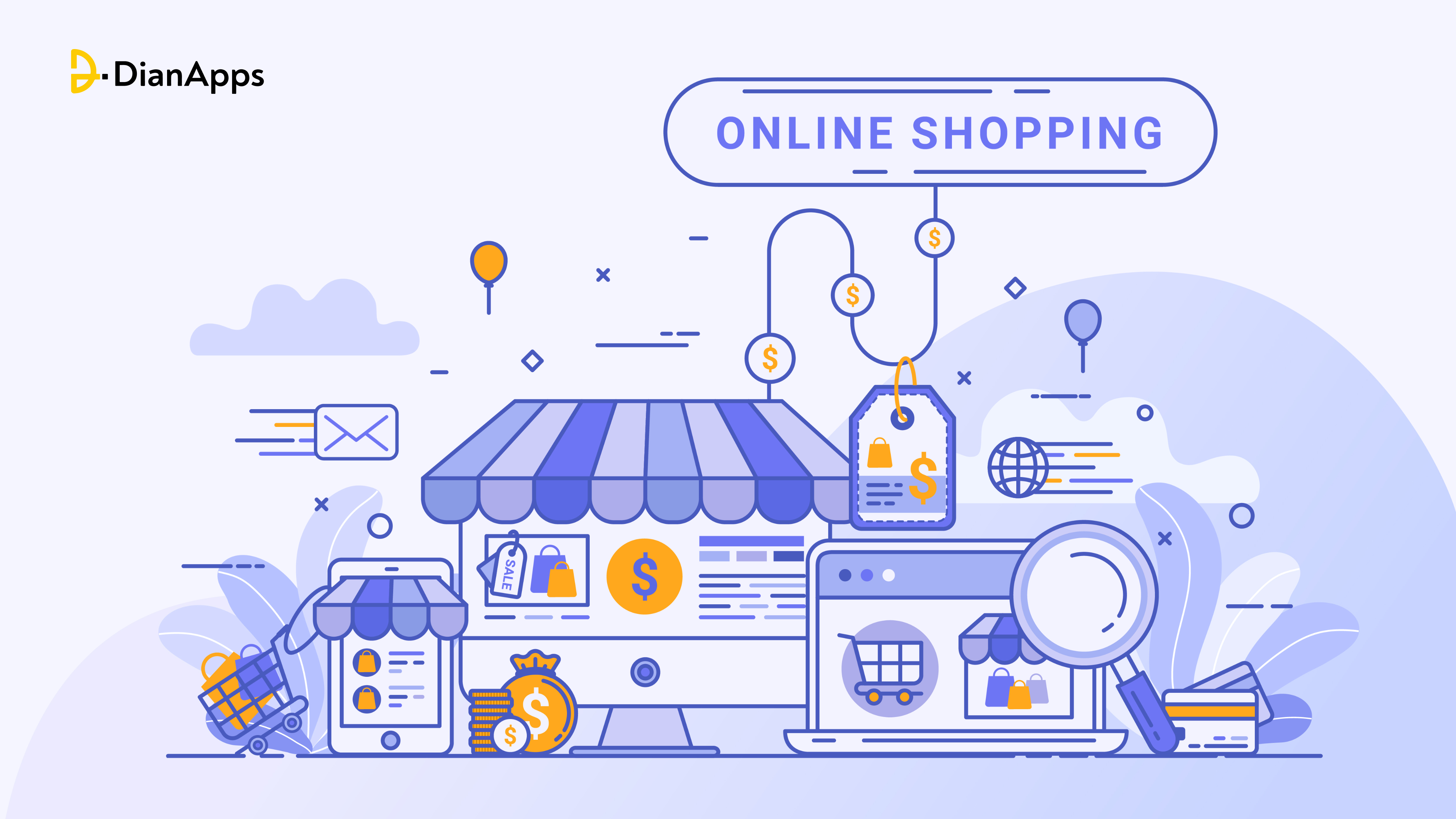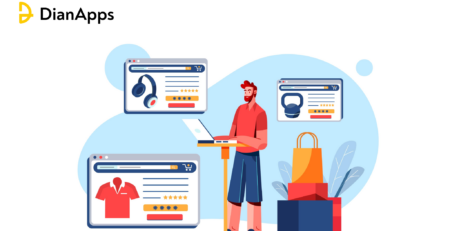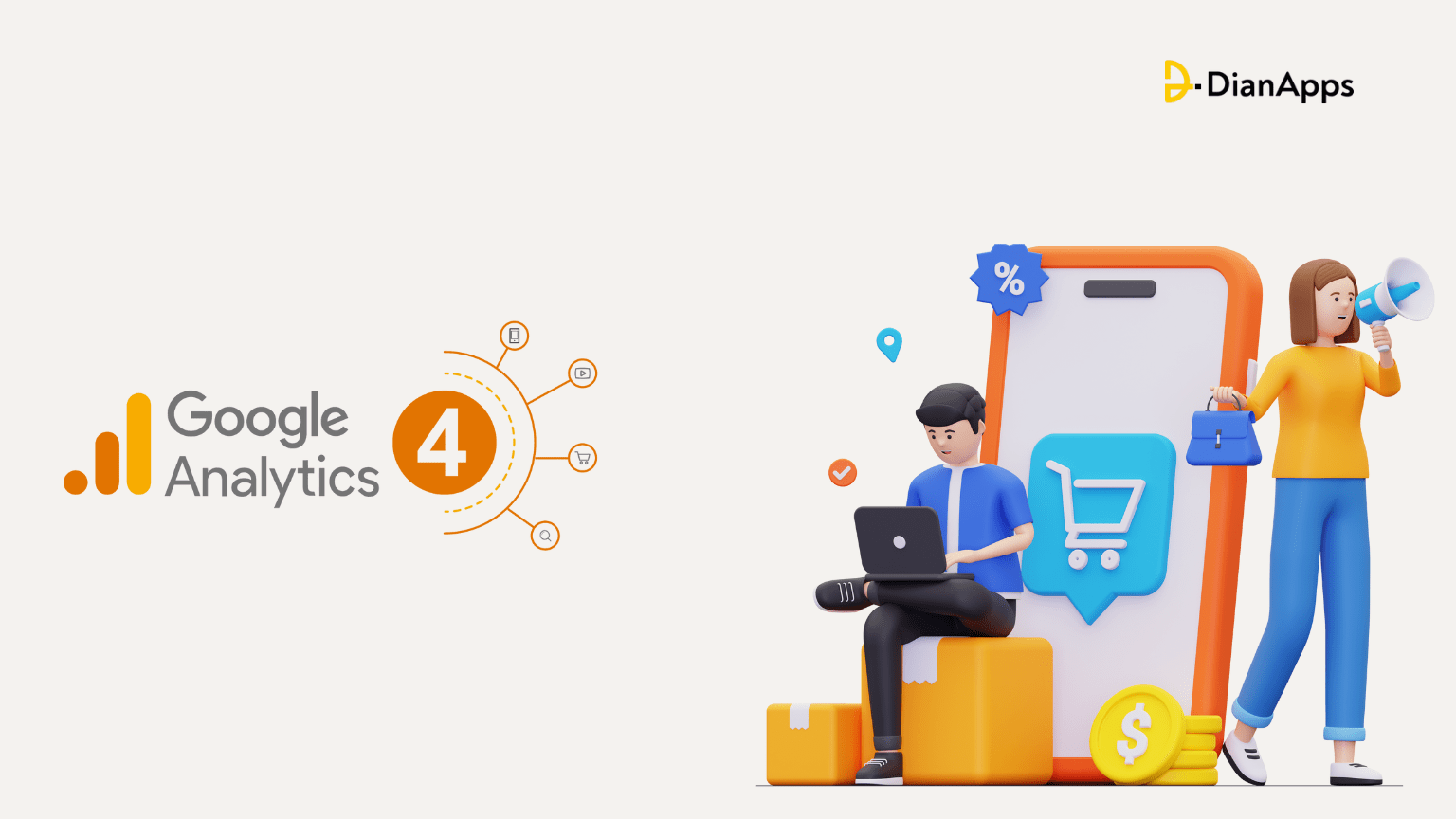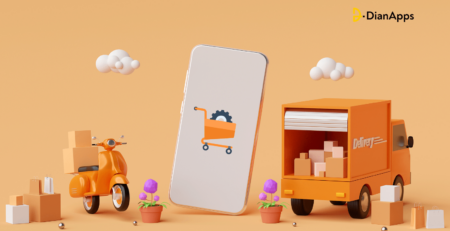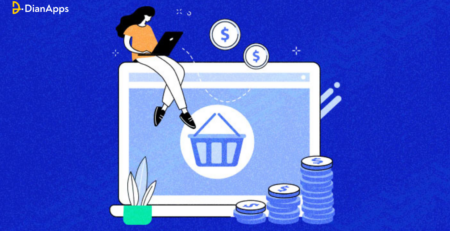Top 7 eCommerce App Features for Startups and Enterprises
The online marketplace has become a necessity for businesses to not just gain profits but also diversify their reach to global audiences. As per the latest survey, the online retail market is now an indispensable part of the global economy. Along with many, the eCommerce industry has also undergone many transformations following the advent of the internet, and why not? The rapid prospect expansion and more and more businesses shifting to digital have led to innovations of many eCommerce platforms and also mobile app development parallelly.
Did you know? More than 48% of online consumers rely on their evaluation of an eCommerce store’s legitimacy on its features and mobile-friendly designs, which have a direct bearing on the possibility that a lead will turn into a client. Certain eCommerce app features improve the usability of your company app, streamline the buying process, and provide customers with wonderful experiences.
On the other hand, you require mobile app development with a wealth of complex features if you want to create a strong business model in the eCommerce solutions industry. This article presents you with some of the top eCommerce app features for 2022 and beyond in case you are unsure about which features to add to your list of eCommerce mobile app features.
Let’s start with the numbers:
- By the end of 2022, it is predicted that the eCommerce sector would generate $875.2 billion in revenue.
- The eCommerce industry is anticipated to increase at a 14.09% annual pace from 2022 to 2025, with a projected market size of $1.3 trillion.
- Not to mention, user penetration is anticipated to reach 80.1% by the end of 2022 and a value of 83.6% by 2025.
- This indicates that during the next three years, the average revenue per user will be around $3,68,000.
- The market for eCommerce software app development is expected to reach $1.2 billion worldwide by 2025.
- According to recent research, along with some of the finest eCommerce applications like Walmart, Target, and Apple, the Amazon eCommerce platform was used by more than 200 million people in the US alone.
This shows that there is a sizable market to explore in the creation of eCommerce apps, which may propel your company’s growth to new heights. Modern software and applications with b2b eCommerce capabilities may boost sales, create a loyal customer base, and provide your company with a competitive edge in the retail industry.
Here is a detailed breakdown of the top 7 features for eCommerce mobile apps that your business will want in 2022 and beyond. Although before you begin building an eCommerce platform, here’s everything you need to know in our previous written blog.
The Top 7 eCommerce app features your business needs in 2022 and beyond
Adopting eCommerce features and capabilities that emphasize your company process is essential if you operate a firm.
For instance, if your eCommerce app entails giving your consumers payment conditions, you must ensure that the capability of establishing a customer’s credit limit is included.
We centered our list of eCommerce features on the major market trends for the upcoming years, despite the fact that the data in the preceding section demonstrate how everything in the digital world of eCommerce is changing. The best eCommerce app features for both small and large enterprises are listed below:
1. Audio experience:
Recently, enhancements to their programs have included audio experiences from a number of well-known website app development company. Using the popular dating app Hinger as an example, users may now upload a 30-second audio clip to their profiles using the app’s audio feature.
Additionally, the well-known music app Spotify gives users the option to make podcasts directly within the app through a variety of plans and bundles. According to experts, such audio experiences that include eCommerce capabilities will be quite popular in the ecosystem of retail apps.
Also Read:- Magento, Shopify, or WooCommerce? Which is the best eCommerce platform?
2. Livestream Shopping:
Post-pandemic, one feature that has transformed the landscape of online shopping is the live-streaming feature. Introduced by the social media giants such as Instagram and YouTube, Livestream helps an individual or an enterprise to showcase their brand’s products or services from various profiles that directly pin the link of the products on the screen.
To give you an example, Dribble live streams its designs and illustrations and offers resource links where the user can connect with admired designers.
As of 2022, the conversion rates of live streams are 10 times higher than eCommerce website features. Also known as live commerce, this feature is expected to increase threefold and reach $35 billion by 2024.
3. Buy-now-pay-later:
As an alternative payment method, consumers are increasingly expecting a buy-now-pay-later (BNPL) feature like Afterpay. According to an enterprise software development company, users may utilize this option to make a purchase and pay for it over time in several payments. It is anticipated that BNPL transactions would rise by nearly $450 billion through 2026. Consumers and shoppers are reportedly more inclined to use BNPL than credit cards when making large installment payments.
The BNPL eCommerce function known as Apple Pay later has also been effectively deployed by IT behemoths like Apple. Users can choose to divide the whole purchase price into four equal installments, with or without interest, using this option. The pay later feature has also been elevated to their list of sophisticated eCommerce features by some of the leading eCommerce programs.
4. CTV advertising:

One of the emerging developments in the eCommerce app development sector, CTV, sometimes referred to as Connected TV advertising, is transforming the marketing environment for companies. Following Apple’s iOS 14.5 update and Google’s devaluation of third-party cookies, eCommerce business platforms are searching for new ways to connect with their target audiences while maintaining privacy standards. They have a new performance channel called CTV advertising.
According to recent research, 82% of US TV homes have at least one linked TV device and 39% of individuals in the country watch videos on CTV devices. This is how you can seize the chance and transform CTV advertising into your new performance channel as a component of your improved eCommerce platform.
5. Headless commerce:
In the modern day, digital agility for eCommerce app solutions is essential to staying competitive. The features of eCommerce apps must adapt to the constantly changing shifts in customer behavior, which is why company owners have added headless features to provide a seamless user experience.
Forbes reports that a staggering $1.65 billion in investment has been obtained for headless technologies, which shows how popular they have become over the last two years. The eCommerce app’s headless architectural feature enables APIs to transmit data in real time between frontend and backend processes, systems, tools, and the user at the center.
Multiple channels may be easily integrated and managed without the need for different systems or tools.
6. The assistance of AR (Augmented Reality):
Shopping assistance from AR is nothing new. The AR help function has been the most popular among all the sophisticated features of eCommerce and mCommerce apps. This is supported by the prediction made by a recent poll of retail industry trends that one-third of US consumers will use augmented reality (AR) technology while making online purchases.
The AR assistance function is used by well-known eCommerce applications like Amazon to enable consumers to test things in-app in real-time.
Amazon Fashion just unveiled its in-app virtual try room for shoes and other items. Similar to this, the Sephora app offers a face recognition-based AR help function called Virtual Artist that enables users to try on cosmetics.
7. Google Analytics:
Now that your app is up, consumers are visiting it and making purchases. But which product sells the most, do you know? Do you know when most people download your app? If you don’t, Google Analytics can help you assess the full potential of your app. Nearly every list of features for mobile apps includes Google Analytics, and for good reason.
You may learn which goods are selling better, how users engage with the app, and use trends using Google Analytics. You may utilize this information to develop user acquisition tactics.
How can DianApps help you with eCommerce app development features?
Internet today has opened doors for organizations and individuals to showcase their products and services to the global marketplace. From the customer’s front, they no longer have to waste time dragging themselves to the shopping malls, to get all that shoppers want at their step with the liberty to compare and pick the best conveniently. This has indeed intensified the whole shopping experience while also saving costs seamlessly.
DianApps is a top eCommerce app development solution provider that uses scientific data to examine visitor behavior and identify trends that affect customers’ purchasing choices.
We provide a wide range of services, such as eCommerce app development, mobile commerce app development, eCommerce to mCommerce migration, eCommerce wallet creation, eCommerce banking, and much more.
Final Thought!
The future scope of the eCommerce industry is booming as it is going to show some major changes in terms of scalability and performance. These were our top 7 trending eCommerce app features that even businesses must integrate not just to make the life of a user smooth but also to capture more leads effortlessly.
Wanting to start your own eCommerce business? We can help you set up your platform by effectively understanding your business needs and expectations and then modifying our methodologies accordingly. To get going, speak to one of our eCommerce app development specialists.
